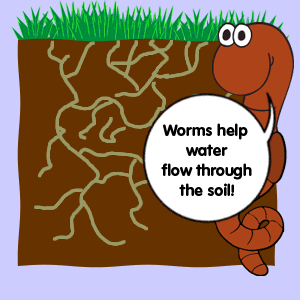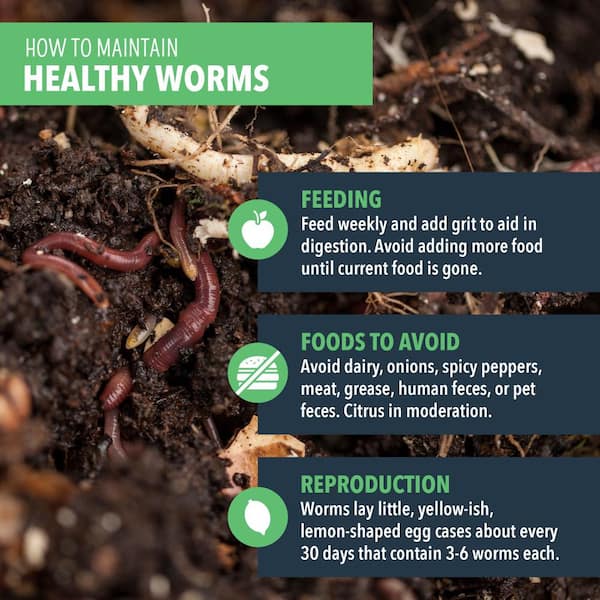The smart Trick of North Carolina Worms That Nobody is Discussing
The smart Trick of North Carolina Worms That Nobody is Discussing
Blog Article
Rumored Buzz on North Carolina Worms
Table of ContentsThe Greatest Guide To North Carolina WormsThe Ultimate Guide To North Carolina WormsThe Greatest Guide To North Carolina WormsThe Buzz on North Carolina Worms
Example: 1-gallon of worm spreadings to 4 gallons of potting mix. Do NOT make use of a potting mix that has chemical fertilizers in it. Read the labelit will certainly claim. 1/2 cup in the bottom of the planting opening for smaller plants. 1 cup for bigger plants. ie. tomatoes, environment-friendly peppers, summer season squash, and so forth.
The addition of tea can additionally add increased microbial biomass to your dirt. You can always side-dress your plants with worm spreadings at any moment. Simply remember, the microbes will certainly die if revealed to UV rays (Sun), so be sure to cover the spreadings with an inch or so of dirt.
This baffled them for years till the testing approaches ended up being much better. They discovered that plant development and health and wellness exhibited a Normal curve. It would get far better(with more spreadings), level off, and afterwards decline. They were baffled. They lastly uncovered that excess plant-growth hormones were the wrongdoer. A lot of worm castings would certainly accelerate the growth to a rate that the plant could not recuperate from.
The Definitive Guide to North Carolina Worms
I have clarified the merits of worm spreadings for regarding 2000 words. Worm castings are no different. It takes time to create quality worm spreadings.
Worm spreadings definitely cost even more than chemical fertilizers. Worm spreadings are on the more affordable end of organic plant foods. (50 gallons per year) It is a much harder and extremely costly financial investment to create large quantities of worm castings.

Creating a healthy and balanced soil may be the greatest benefit of worm spreadings. We went over worm spreadings NPK and likewise the correct nutrient analysis that need to apply to worm spreadings.
Some Known Factual Statements About North Carolina Worms
We talked about some of the drawbacks connected with worm castings. I covered a great deal of material in this post.
The upright burrows are normally open, although the worms cover the leading with deposit and waste matter. The vertical burrows are extremely essential points of entry for quick water infiltration right into the dirt, specifically in no-till systems. Air-filled porosity is essential in aiding plant origins to prosper. Roots need oxygen for their growth, whereas they generate co2 that requires to leave the soil.
Earthworms boost porosity by two mechanisms: (1) by creating irreversible burrows, and (2) by boosting soil aggregation. Gathering is enhanced by the mixing of dirt and raw material in the earthworms' guts. Lake Hickory Bait. These highly stable accumulations are transferred by some earthworms in their burrows, and by others at the surface of the soil


In another study, earthworms were estimated to consume 4 to 10 percent of the top 6 inches of the soil yearly. Soil compaction decreases the porosity of the soil.
Little Known Facts About North Carolina Worms.
Typical earthworm populaces can conveniently take in 2 lots of dry issue per acre each year, partly digesting and blending it with soil. The significance of earthworms to blend surface residue with soil ends up being really clear in soils that do not have any earthworms. The majority of our Pennsylvania dirts have at the very least some earthworms, and the impact of their total lack, therefore, can not be noted.
(https://ifidir.com/North-Carolina-Worms_417662.html)In these dirts, the formation of topsoil with affordable natural issue material did not take area, causing inadequate plant development. When the reason was established, the government of the Netherlands started a campaign to introduce earthworms. After the intro of the earthworms, a dark topsoil layer was created, and plant development boosted considerably.
They live largely from partly decayed natural matter that is already incorporated in the soil. They consume their means with the soil, creating horizontal burrows that they loaded with their waste matter. These varieties consume big amounts of dirt that they combine with absorbed crop residue in their guts. or anecic species stay in long-term vertical burrows that can be 5 or 6 feet deep.
Their burrows remain open, although they cover the top with crop residue that they draw to the entryway. These types ingest substantial quantities of soil that they mix with absorbed residue in their guts. Their waste matter is mainly transferred at the surface area of the soil. The nightcrawler Lumbricus terrestris is one of the most popular participant of this group.
Report this page